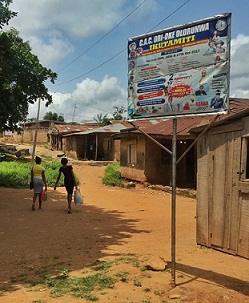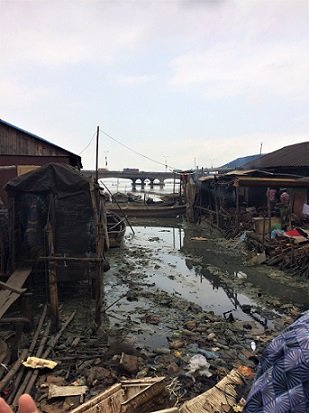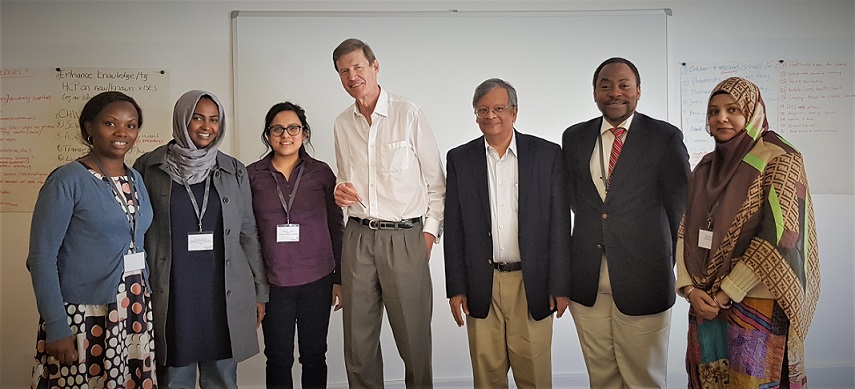About us
 Our NIHR Global Health Research Unit on improving Health in Slums focuses on health services in slums. Many of the world’s poorest people live in slums, over-crowded neighbourhoods often made up of makeshift or derelict housing, without running water or sanitation. Today, slums house nearly a billion people and are growing, as more and more people are born and move to cities. People living in slums have many of the health issues seen in the rural poor (dangerous childbirth, malnutrition, infectious disease deaths) alongside increasing risk of diseases linked to cities (traffic accidents, violence, stroke, heart disease).
Our NIHR Global Health Research Unit on improving Health in Slums focuses on health services in slums. Many of the world’s poorest people live in slums, over-crowded neighbourhoods often made up of makeshift or derelict housing, without running water or sanitation. Today, slums house nearly a billion people and are growing, as more and more people are born and move to cities. People living in slums have many of the health issues seen in the rural poor (dangerous childbirth, malnutrition, infectious disease deaths) alongside increasing risk of diseases linked to cities (traffic accidents, violence, stroke, heart disease).
Even if slum residents live close to health services, they can have difficulty getting needed care. There are many reasons for this. It can be because city authorities do not have the will or the resources to meet the needs of those living in the slums. It can also be because people living in slums can’t afford the cost of health care, or the time off work to seek care. The result is that many people living in slums go to low quality or unqualified clinics, or to various places (such as clinics run by charities to tackle specific issues e.g. HIV) but without joined-up care. This has negative consequences for both individual and population health.
Improving health services in slums would have a large impact on health in low and middle income countries. Because slums are overcrowded, better health services could benefit many people at once. Our unit aims to make progress in this direction across seven slums in Africa and Asia.
Our goals are:
-
 To map current health services and facilities and understand how these are used in seven slums across Asia and Africa.
To map current health services and facilities and understand how these are used in seven slums across Asia and Africa. - To build on these maps to identify costs associated with how health services run in each site including informal providers, such as traditional healers, and the quality of these services as well as identifying costs to the patient and their households.
- To systematically update our knowledge on:
1) Disease prevalence in slums.
2) Current healthcare provision models in slums and elsewhere in cities to include services which help to prevent disease.
3) General literature on financing and the design of health services in low and middle income countries. - To generate viable options for health service delivery in slums and cost these options relative to likely benefits.
- To work with decision makers and slum communities in designing the models of health service delivery, with a view to a subsequent evaluation of effectiveness and costs of viable options.
Further to the above plan of work we aim to build a research programme which survives after our NIHR funding ceases; and to create a platform of funded activities into the future.
The University of Warwick is working with academic institutions in Nigeria (University of Ibadan), Kenya (African Population and Health Research Center), Pakistan (Aga Khan University), and Bangladesh (Independent University Bangladesh) , policy organisations and slum communities. The project commenced on 1st June 2017 and will be completed by 31st March 2021.
During the project we will produce tools and information to support people who make decisions relating to health service planning. Examples include:
- Detailed slum maps, which have already been demonstrated to support health service delivery by aid organisations during health crises (such as cholera outbreaks)
- Knowledge of current demand and supply of health services in slums vital to planning future services;
- A body of evidence on health service delivery relevant to slum populations, so policy-makers can learn what is happening in this area globally so that good practice is shared and failures are not duplicated.
Our outputs will support improvements in the organisation and effectiveness of health services, thereby delivering measurable benefits to one of the world’s most vulnerable population groups.
